A quiet week on the calendar so a quick moment to take stock of the stats and look at the teams and the news around them especially as the transfer market begins to warm up. Riders can’t sign for another team until August but they can agree terms and sign pre-contracts, for example Matteo Trentin’s move to Mitchelton-Scott was done around this time last year, the year before John Degenkolb’s move to Trek-Segafredo was done in the spring too and many more riders shake hands in March and April before signing the official document later this summer.
Quick Step have 19 wins from ten riders: they win a lot and a lot of them win. That’s 19 wins and nine second places, nine third places, a statistical oddity in that they win much more often than they place. Why? It’d be easy to cite a single unique factor but it’s surely a mix. For starters they recruit the right kind of riders, they’re not aiming to win a grand tour and so save precious resources by not having a contender; witness how they let Dan Martin go rather than match UAE Emirates. In races it’s rare they have a single leader accompanied by a mix of flat terrain bodyguards and mountain lieutenants who ride in the service of their leader (more the model at Movistar or Bahrain-Merida). There is the “wolfpack” mentality too where all riders are encouraged to have a go, what’s called a flat hierarchy in managerial jargon. But is the right strategy? It might sound odd to ask but does it sell laminated flooring? It probably does and the team’s budget is significant but less than the likes of BMC, Team Sky, Katusha and now UAE Emirates.
Team Sky lost Elia Viviani to Quick Step but haven’t quite given up on sprinting because they recruited Kristoffer Halvorsen and Chris Lawless, the latter winning a stage of the Coppi e Bartali over the weekend. Otherwise Egan Bernal has been impressive, even for a rider who expected to impress. As well as the road they’re still hoping for victory in the hearing of Chris Froome, whenever that comes. L’Equipe (€) suggested recently that the case could go to a tribunal in early May.
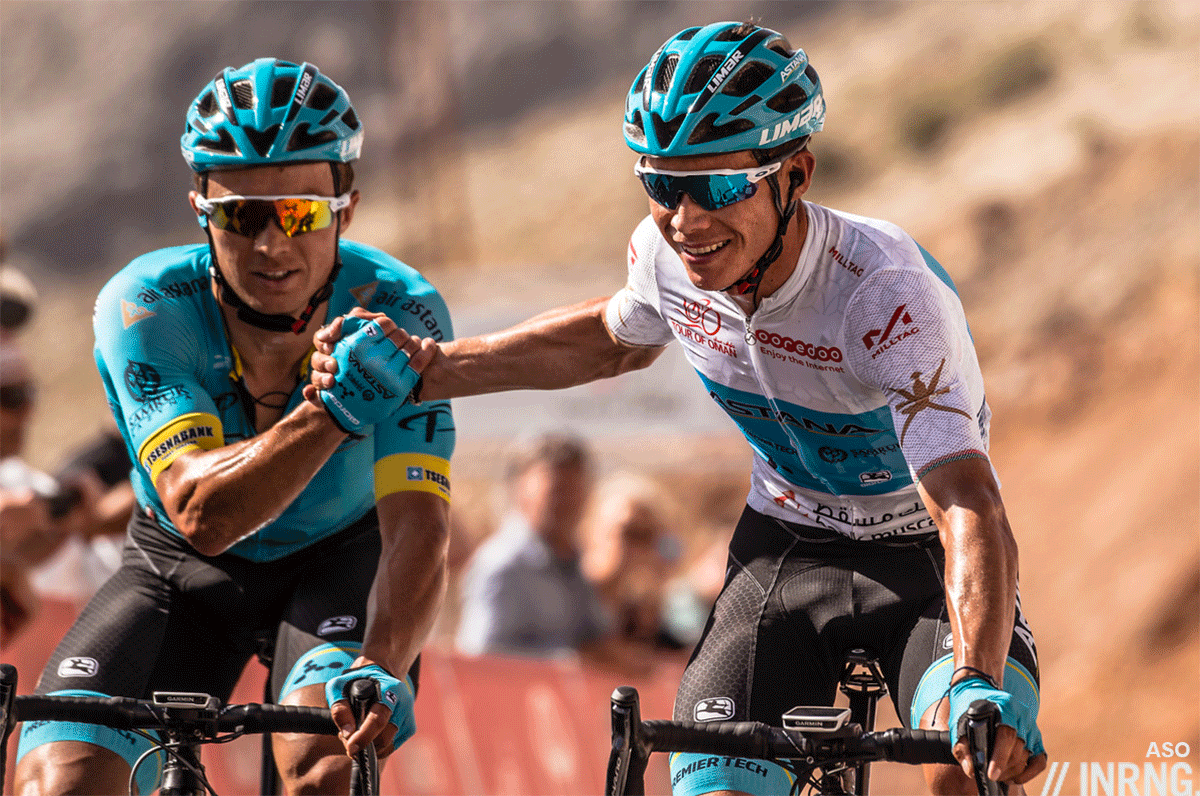
Astana are on eight wins and over their financial woes for now with a shake-up in the Kazakh sporting scene unblocking the funding they need. So it was right to read Alexandr Vinokourov’s interview as a move to stir things up back home. But it won’t be without consequence because would a rider want to sign for Astana knowing the funding issue could crop up again?
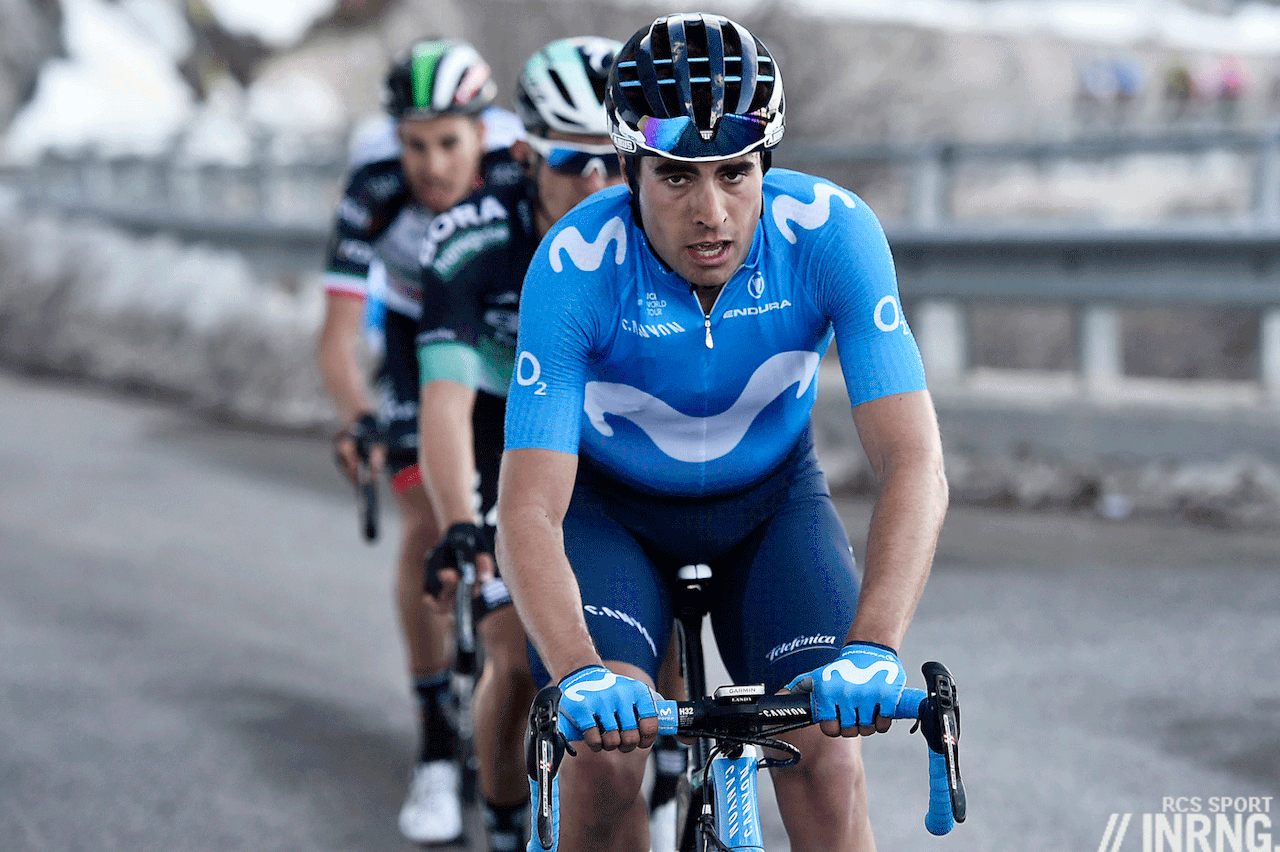
Meanwhile at Movistar Alejandro Valverde keeps on winning. Say what you like about him (subject to libel laws) but if he can give his rivals the slip, he can’t escape his past. You can admire his racing brain, he never seems to make a wrong call out on the road but the past makes enjoying his success harder. But that’s our problem not his. Otherwise Movistar’s story this season is that of its captains because Valverde has won and so have Marc Soler and Mikel Landa (pictured)… and if Quintana’s one it’s Dayer rather than Nairo. In part this does reflect the team’s hierarchical ways but it’s also the result of losing several lieutenants over the winter and just a bit of luck too. Still can the team retain all four of these riders?
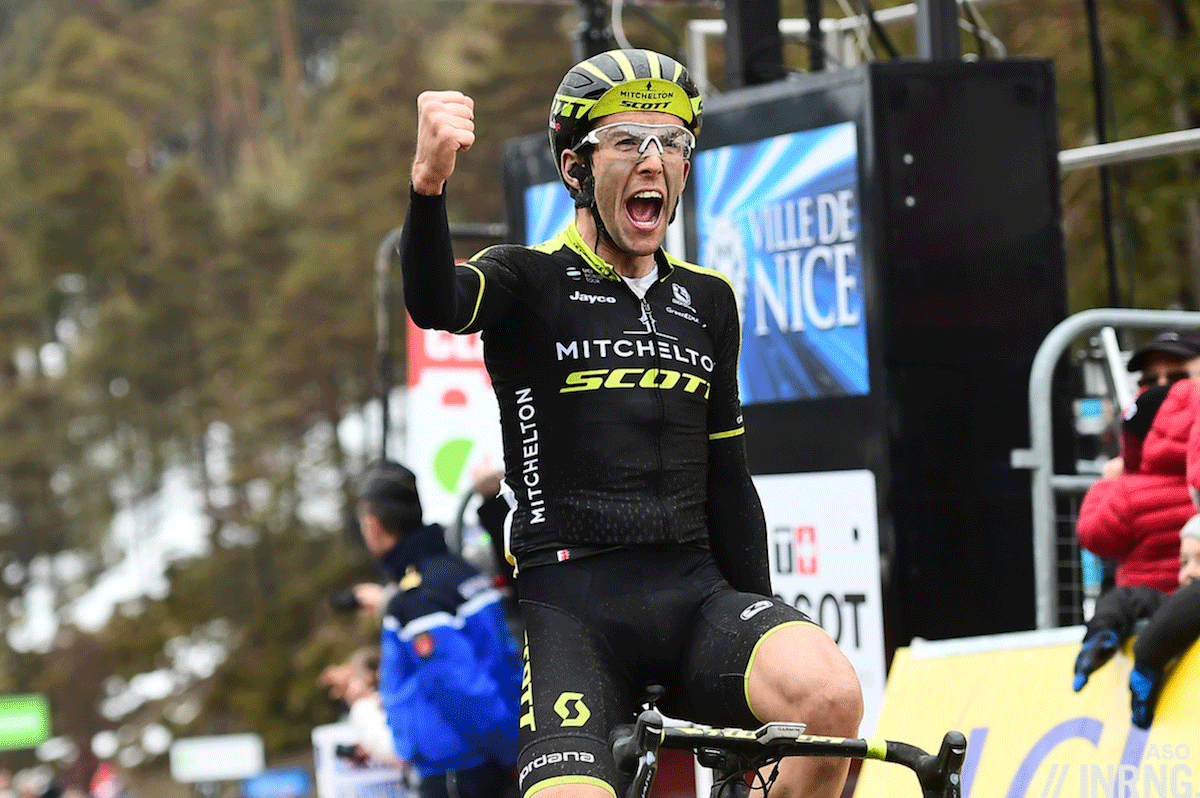
Mitchelton-Scott are on 11 wins with Simon and Adam Yates both winning recently. It’s not so much what they’ve done but what they’ll do that’s interesting whether Simon Yates and Esteban Chaves in the Giro or Adam Yates and Caleb Ewan in the Tour de France. Also the contracts Ewan and the Yates are up this year, can the team find the money needed to retain them? If so would they want to? It’ll also be interesting to see how Jack Haig and Rob Power fare.

BMC Racing‘s future background theme to the season with the bike manufacturer due to stop title sponsorship and management searching for a replacement. The latest according to cyclingnews.com is that the team rides in 2019 but the sponsorship and therefore the budget and future roster is still in doubt. There’s an element of management having to say this, Slipstream were renewing rider contracts without the sponsorship inked for 2018 last year party in the hope that securing star riders would reassure sponsors that the assets were in place. Remember riders cannot sign with another team until 1 August but that there are many ways around this, they can sign a contract agreeing to the offer of a contract of employment so that all that needs to be done is ink the deal in August. It all makes for a delicate balancing act with a team needing to secure top riders to attract sponsors and why searching for the new sponsor when team’s leading riders are out of contract for 2019 only makes it harder.

Lotto-Soudal are still searching for that big northern classics win, a huge target for a team sponsored the Belgian lottery. Tiesj Benoot delivered in the Strade Bianche but the rest of the squad doesn’t look likely. Still they deliver in other ways and it’ll be interesting to see Tim Wellens contest more stage races. Thomas de Gendt took an impressive win the Volta Catalunya, pure De Gendt via a long range breakaway and then riding his rivals off his wheel before a taking the solo win. But with seven or eight rider squads in stage races can the team afford to have a rider doing as he pleases? Perhaps not on other squads but it works well for Lotto-Soudal.
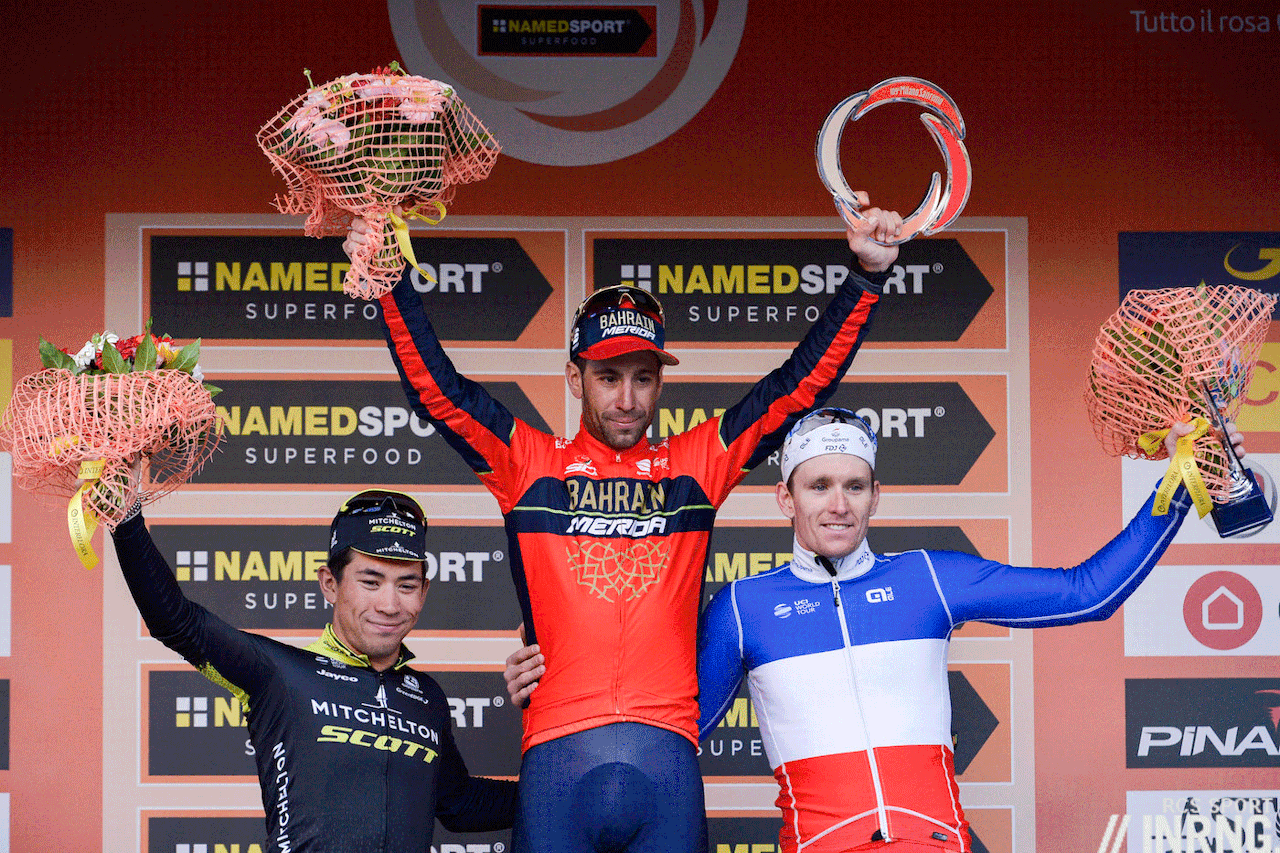
Bahrain-Merida have three wins but will be delighted with Vincenzo Nibali’s Sanremo success, as much as the team is supposed to project Bahrain around the world it’s got an Italian leader, Italian management and and Italian HQ and the win got a lot of traction in Italy. Matej Mohorič has a win and keeps making a name for himself as a descender. It’s one thing to know he might try a move on a descent, another to try and follow him thanks to his famous aero tuck and cornering skills and so when he’s in form it’s bringing added excitement to racing.

Bora-Hansgrohe remain an odd squad, capable of winning so much thanks to Peter Sagan but still very top heavy, a super star with fewer support riders in orbit around him than we might expect, even if they’ve added some balance to the classics team. But perhaps it’s no bad thing because to have Sagan surrounded by six classics contenders would throttle the life out of many a classic where rivals are shut down and the Slovak either goes clear or aims to win from the sprint. When he and the other classics contenders take their break from April into May management will hope the likes of Davide Formolo and Rafał Majka step up.

UAE-Emirates have made big signings in Alexander Kristoff and Dan Martin but not got much to show for it so far. Kristoff looks off the pace and while Martin would normally have got a win by now but has time to collect something in the Basque Country or the fast-approaching Ardennes.
At the bottom end of the table all 18 World Tour teams have a win now but Ag2r La Mondiale, Dimension Data and Education First-Drapac are still chasing a World Tour win. Oliver Naesen threatens to win a classic but it’s a crowded field and there are only three cobbled classics left this spring; the same for Sep Vanmarcke.
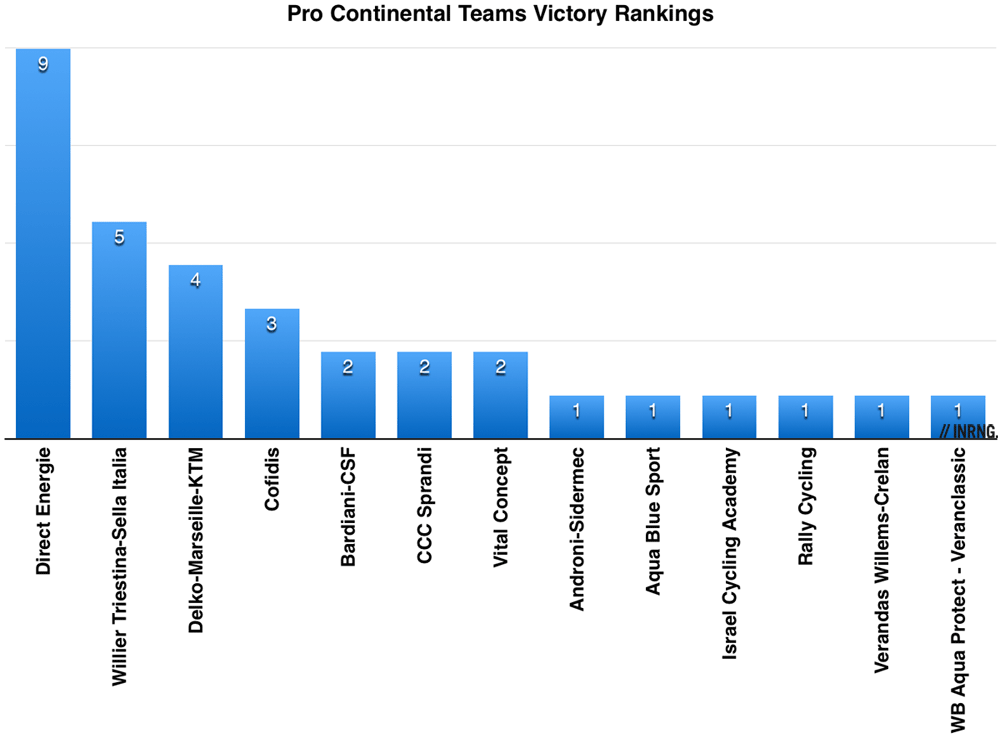
In the Pro Conti ranks Direct Energie lead by a long way and better still had two jackpot stage wins in Paris-Nice, especially as World Tour wins for cycling’s smaller teams are very rare. Wilier Triestina-Selle Italia have five wins but none in Europe but should be happy to export their sponsor’s Italian branding. Cofidis are on three wins but Christophe Laporte has been one of the revelations of the season, not for his win but for making the front group in Sanremo and if he finished 13th it was after tangling his front wheel in someone’s rear mech and finishing on a front wheel with very few spokes and then he finished fourth in Gent-Wevelgem. Otherwise the likes of Rally Cycling and Aqua Blue Sport may not have big results but they often enliven the races they’re invited to.



” because Valverde has won, Nairo Quintana has too…”
Dayer has won in Colombia. Nairo is quite for while.
Fixed, should not have forgot Dayer’s win.
Love the title picture
+1
Is it just that white isn’t flattering or does Kristoff look overweight
I was thinking the same thing but his arms and legs look like they have no fat on them. He’s either just taken a big breath in or he’s got oedema.
He’s just built that way, many of the top riders can be lean but have barrel chests, home to their giant lungs. Katusha were publicly saying he’s overweight last year but was this to encourage him to watch his diet, a criticism because they knew he was leaving or something else? Whatever his problems at the moment though, it looks unlikely it’s weight.
white shorts!… where to start… even that Astana white shirt looks quite good on black shorts… but compared to GVA in the black and red, Kristoff’s kit just looks awful.
And that’s despite the terrible Tag Heuer patches on the once beautiful BMC kit! Luckily enough, the blue inserts aren’t much visible in that photo, either.
The words “terrible” and “Tag Heuer” should never be in the same paragraph, never mind sentence, Gabriele.
If it was good enough for Steve McQueen, who are we to argue?
That’s how bad those patches are, they managed to do the impossible and bring “Tag Heuer” and “terrible” together!
White isn’t flattering, no, but a rider who agrees that he has a little bit of a stomach probably shouldn’t be advertising FLAB on his kit.
How long can Valverde keep going on for?! I’m aware of old winners of Paris-Roubaix like Hayman and Duclos-Lassalle, and Poulidor kept going into his 40s. Surely he has a couple of years left at most?! He specialises in the Ardennes and short sharp Spanish hills which you think would be more suited to more explosive 20 odd year olds. I suppose he’s still just a neo-pro compared to Rebellin!
Its a strange one. He seems frankly unbeatable in the early season Spanish races like the Ruta del Sol or Catalunya and in the Ardennes. Everyone knows how he rides yet he still wins anyway. He’s built a huge palmares from such races. I’m sure while he can bag a decent number of wins every late winter and early spring he’ll take all he can get. I’m not sure his past crimes are such a hindrance either. Certainly in the places I read he gets a lot less stick than others I could mention for what would seem, on the face of it, more serious crimes.
Well, for example this post features pictures of athletes whose past incidents aren’t even named. One case was less serious than Valverde’s, while the other’s got different aspects, several of which are more indicting than Valverde’s known past.
However, you raise a significant point speaking of dates. A look at Strava might also suggest what else is different in Valverde’s prep besides suspected doping.
I’d also add that, historically, blood doping came along with the overspecialisation era and a growing selection of carefully picked objectives. It’s possible that’s just pure chance, no doubt, yet when you look into how blood doping works (the undisclosed Fuentes papers, for instance) you start understanding the reasons which might explain such a phenomenon.
The quality and importance of to the specific team are important. AG2R’s 6 wins are just Class 1, but compensated for by all being in the home market, France. Bahrein Merida have just 3 though one a home market monument. Must be worth a substantial number of class 1s. Looking at some of the low scoring teams the problem seems exacerbated by numbers of injured and ill, DD a good example with the season already appearing difficult. On the same subject accident and injury numbers already seem high despite the reduction in numbers for which the aims were to reduce risk and discourage strong teams controlling. Early days, and poor weather, but accidents seem numerous while much racing has been open: P-N, T-A, Catalunya
you can’t of course prepare for every mishap and bout of bad luck but injuries and illnesses aren’t always hampering a team’s succes. I think QS is an extraordinary exampl, not longer than ten days after they lost Gaviria to injury two young sprinters on the team banked their first pro wins. They’ve also suffered that horrible crash in South-Africa which took out three of their strong support-riders ( Vakoc only returned home last week). If you allocate all your resources to a few star riders and ignore development, scouting and team-support you might run into serious trouble once bad luck strikes.
Mitchelton-Scott have done very well this year, great home performances and some WT stages in Europe too.
I know what you mean about Valverde. Unrepentant doper, dodgy past etc. But so classy on the bike, always exciting to watch. I do feel a bit of guilt for cheering him sometimes!
He’s extremely professional in the sense of always staying fit and motivated. That’s quand-même quite a feat, especially for his age. Regarding his past, my question is if he could still be physically benefitting from the blood doping practices he was convicted for? Does blood doping has long-term sporting life-long performance-enhancing effects?
“Does blood doping has long-term sporting life-long performance-enhancing effects?”
Yes.
Some sources?
This is my issue Ferdi. Those who cheat in ways which have measurable long term effects are effectively cheating into the far future of their careers but not getting punished for it. In such a scenario a given rider might see a small ban of 2 years (for example) as a small punishment worth taking as the benefit will be greater.
Same question as for Tom above.
This issue bugs me as well. Apparently the effects can be long lasting. So how long until we see an amateur who knows he can go pro and be a good domestique and make 100-200k a year delay going pro, taking a sabbatical and doping himself to the max for 2 years. Wait till it gone from his system, start racing again, get a contract, go pro and be a gt contender earning $2m+
Ok, so this the the most extreme example possible but you get my point
The evidence on this is a bit slim and relates to lab tests on a small sample rodents. Not to say it can’t happen, for several years academia thought EPO would be detrimental to performance because more red blood cells means more viscous blood which would not flow so well. Until practice beat theory.
The evidence is next to no-existing, when blood doping is concerned. And there’s a well-studied (EPO patients) relevant backlash effect which, at most, is partially compensated in case you’re lucky enough by possible *indirect* benefits. What we know is that there is no capillary density nor muscle efficiency improvement thanks to previous EPO use.
And that “practice beat theory” thing needs to be looked into carefully, too. In fact, doping scientists already knew at the end of the 90s that it wasn’t all about raising HCT: other characteristic of the blood were more relevant, precisely because the fluidity factor.
That’s also why a good doctor and the possibility to fine tune your doping made a difference even if the products were available to the most.
But let’s trust for once that “practice beat theory” approach. We need no rodents. We’ve got a full sample of supposed ex-dopers doing their best to perform.
If it was true that doping had a long-lasting effect on performance and, at the same time, current doping wasn’t as endemic as it was until well into the years 2000, we should observe that the average age of, say, TdF top-tenners is increasing. Aged (ex-)dopers, some of them at least, should have an impact on GC.
No pattern of that kind can be observed in the last 10 years.
Then, this bunch of conspiracy theorists should also explain me why the “past blood doping” effect worked on, say, Valverde and not on Contador or Basso (whose performance look affected by age *exactly* as you’d expect within an historical perspective which goes back to an age before blood doping). Why did that work only for one or two years in Horner’s case? Even Rebellin’s curve is very different from Valverde’s.
Why didn’t Menchov benefit of that, not at all? And, OTOH, what should we infer about Evans?
It’s not about getting surprised by a couple of notable cases which happen to come into the spotlight. Before blood doping became rampant, you already had the likes of Zoetemelk, Gimondi, Poulidor being competitive in GTs’ final classification well into their 30s, and all the way back to Bartali… or Lambot! All that in eras when cycling, as such, was a much more demanding and damaging sport.
Yet, if we speak of muscular doping (testosterone, steroids), it’s a whole different question. The evidence remains feeble, but at least there’s something. But are we so sure that we’re actually speaking of “past doping”, in this case?
Who’s to say that he’s still not blood doping? As far as I remember he never once acknowledged or apologised for his transgressions. Forever suspect as it sits.
Oh come on! At least he is not a hipocrat of saying oh how sorry he was. Do you really believe the guys caught red handed are really sorry for breaking the rules? Probably they only feel sorry for being caught.
I would rather bring up Valverde not being a team player in the 2012 and 2013 WC, if any.
Yeah I’m not really that bothered about Valverde as an ex doper. The 2013 Worlds and even punching the points jersey of Purito in an intermediate sprint on the last day of a fairly recent Vuelta, unforgivable. I’d imagine he doesn’t get a Christmas card off Oscar Freire either. He never gives interviews in English but he comes across as utterly ruthless.
Whatever the reasons, the Quick Step attitude to racing is a welcome and exciting change to some of the 3 week events where attacks generally come in the final kilometer. Attacking and winning more than 50 Ks from the line is a supreme achievement, and left teams that rely on just below threshold pace no where to be seen. Lets hope the Tour of Flanders gives us more of the same.
Can someone with better visualization skills put together an overlay or comparison of YoY changes to the rankings? Curious how this differs from the same point last year, and by how much.
Also has the race calendar added/removed any races to affect the outcome here; ie, the calendar is more condensed or even broader?
I know I know, I should do it myself but maybe someone bites…
I don’t know how to embed (or if I can) pictures but here’s the data:
2017 Total Races: 114
2018 Total Races: 121 (▲7)
% Change: 106%
Quick Step
2017 Wins: 17 (Rank #1)
2017 Win %: 14.91%
2018 Wins: 19 (Rank #1)
2018 Win %: 15.70%
YoY Change: 5.30%
Team Sky
2017 Wins: 8 (Rank #5)
2017 Win %: 7.02%
2018 Wins: 15 (Rank #2 ▲3)
2018 Win %: 12.40%
YoY Change: 76.65%
Movistar
2017 Wins: 13 (Rank #3)
2017 Win %: 11.40%
2018 Wins: 11 (Rank #3)
2018 Win %: 9.09%
YoY Change: -20.28%
Michelton-Scott
2017 Wins: 13 (Rank #4)
2017 Win %: 11.40%
2018 Wins: 11 (Rank #4)
2018 Win %: 9.09%
YoY Change: -20.28%
BMC Racing
2017 Wins: 17 (Rank #2)
2017 Win %: 14.91%
2018 Wins: 8 (Rank #5 ▼)
2018 Win %: 6.61%
YoY Change: -55.66%
Lotto Soudal
2017 Wins: 7 (Rank #6)
2017 Win %: 6.14%
2018 Wins: 8 (Rank #6)
2018 Win %: 6.61%
YoY Change: 7.67%
Trek-Segafredo
2017 Wins: 4 (Rank #10)
2017 Win %: 3.51%
2018 Wins: 8 (Rank #7 ▲3)
2018 Win %: 6.61%
YoY Change: 88.43%
LottoNL-Jumbo
2017 Wins: 3 (Rank #13)
2017 Win %: 2.63%
2018 Wins: 8 (Rank #8 ▲5)
2018 Win %: 6.61%
YoY Change: 151.24% (groenewegen effect?)
Astana
2017 Wins: 0 (Rank #18)
2017 Win %: 0.00%
2018 Wins: 8 (Rank #9 ▲9)
2018 Win %: 6.61%
YoY Change: -%
Astana
2017 Wins: 0 (Rank #18)
2017 Win %: 0.00%
2018 Wins: 8 (Rank #9 ▲9)
2018 Win %: 6.61%
YoY Change: -%
Ag2r La Mondiale
2017 Wins: 2 (Rank #14)
2017 Win %: 1.75%
2018 Wins: 6 (Rank #10 ▲4)
2018 Win %: 4.96%
YoY Growth: 182.64%
Groupama-FDJ
2017 Wins: 7 (Rank #7)
2017 Win %: 6.14%
2018 Wins: 4 (Rank #11 ▼4)
2018 Win %: 3.31%
YoY Growth: -46.16%
Katusha-Alpecin
2017 Wins: 5 (Rank #8)
2017 Win %: 4.39%
2018 Wins: 3 (Rank #12 ▼4)
2018 Win %: 2.48%
YoY Growth: -43.47%
Bora-Hansgrohe
2017 Wins: 4 (Rank #11)
2017 Win %: 3.51%
2018 Wins: 3 (Rank #13 ▼2)
2018 Win %: 2.48%
YoY Growth: -29.34%
Bahrain-Merida
2017 Wins: 2 (Rank #15)
2017 Win %: 1.75%
2018 Wins: 3 (Rank #14 ▲1)
2018 Win %: 2.48%
YoY Growth: 41.32%
UAE-Emirates
2017 Wins: 4 (Rank #12)
2017 Win %: 3.51%
2018 Wins: 2 (Rank #15 ▼3)
2018 Win %: 1.65%
YoY Growth: -52.89%
EF-Drapac
2017 Wins: 1 (Rank #17)
2017 Win %: 0.88%
2018 Wins: 2 (Rank #16 ▲1)
2018 Win %: 1.65%
YoY Growth: 88.43%
Dimension Data
2017 Wins: 5 (Rank #9)
2017 Win %: 4.39%
2018 Wins: 1 (Rank #17 ▼8)
2018 Win %: 0.83%
YoY Growth: -81.16%
Team Sunweb
2017 Wins: 2 (Rank #16)
2017 Win %: 1.75%
2018 Wins: 1 (Rank #18 ▼2)
2018 Win %: 0.83%
YoY Growth: -52.89%
source for the 2017 numbers was this article: http://inrng.com/2017/03/team-victory-rankings-march-2017/
I realize there are a few errors, my apologies (Astana listed twice, BMC not having a place number) I was rushing to lunch meeting.
Also the % growth number is devised through the simple (2017 win %/2018 win %)/2017 win% excel formula. The respective yearly win % based on the # of races in that year. Team names used were 2018 names (no real big changes there).
I’d love to put together a chart of the last 10 years of this data, correlate to the DS and stars at the time, budget, etc. Fun!
There are only three cobbled classics left? True. But among them the two that all others are the prelude to. I really hope Sep gets one of them this year. He’s worked so hard for it, and he seems such a sympathetic guy. Always in the wrong place at the wrong time though, it’s hard to believe it’s all only bad luck.
Clearly QS is the top team right now and has a special dynamic. Unfortunate that the Wolf Pack nickname/concept is starting to get branding and marketing attention… really takes away from it.